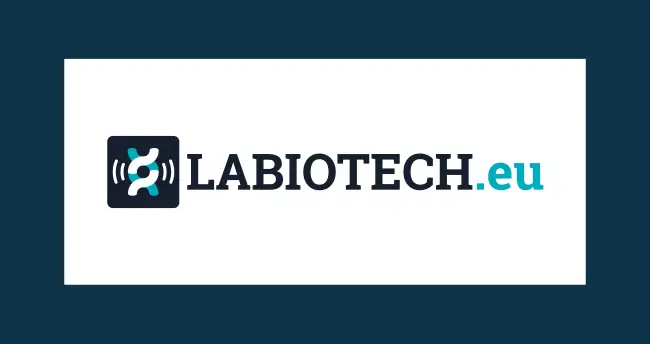
How pharma’s surging M&A is impacting the industry’s tech sector
As dealmaking in biopharma picks up, the CEO of eClinical Solutions sees an opportunity for clinical software companies to make acquisitions easier to close.
When it comes to M&A in the pharma industry, many of the most prominent deals involve a pharma giant acquiring a small to mid-sized company with promising drug candidates in development. More recent major deals such as Pfizer’s $43 billion purchase of Seagen to Bristol Myers Squibb’s $14 billion acquisition of Karuna Therapeutics are an important part of the innovation landscape.
And integrating these companies efficiently is a difficult task. Behind the scenes, software developers and clinical data specialists can play a role in making the transition less cumbersome, particularly at a time when the regulatory landscape is tighter and policies drive a harder bargain on the M&A front.
“At the end of the day, data is the most valued asset for companies in our space,” said Raj Indupuri, CEO of the clinical software company eClinical Solutions. “When you’re getting acquired, a company is not only acquiring your IP, but also the data.”
Indupuri, a 2021 PharmaVoice 100 honoree, said the importance of well-organized data can hardly be overstated both from a value standpoint, as well as a regulatory perspective.
There are so many inefficiencies, and we truly believe it’s not going to be one company that’s going to address or solve all the problems across the value chain — it has to be different solutions coming together in a profitable way.”
Raj Indupuri
CEO, eClinical Solutions
As Indupuri sees it, trends in the pharma industry point to more consolidation as the post-pandemic biotech doldrums subside. Here, we spoke with the CEO about where these trends are heading, how new technology plays a role in M&A and challenges to the dealmaking landscape.
This interview has been edited for brevity and style.
PHARMAVOICE: What kinds of trends are you seeing in biopharma M&A?
RAJ INDUPURI: In the last three years, there was a lot of access to capital across healthcare — a lot of emerging biotech companies, even on the tech side, were able to raise capital easily. And there’s a lot of innovation happening across the board. At the same time, R&D is getting more complex. It takes around $2.5 billion to develop a successful drug, and ROI dropped from around 15% to 3% in 2020. Now, fast forward, and we’re seeing that access to capital is not that easy anymore. So companies are looking at opportunities to be acquired so they can bring therapies or medicines to patients.
From the bigger companies’ perspective, they are trying to protect revenues with the regulatory landscape strain, the Inflation Reduction Act [and] patent claims. They’re looking for innovative companies, as well.
On the tech side of the industry, where do you believe we’ll see more M&A?
The life sciences tech space has become very fragmented over the last few years. We started eClinical in 2012, and a lot of younger companies come with new ideas because the whole R&D problem is quite complex. There are so many inefficiencies, and we truly believe it’s not going to be one company that’s going to address or solve all the problems across the value chain — it has to be different solutions coming together in a profitable way.
With that mindset, and with advances in cloud and AI, so many companies got started, but it’s a tough business, and it’s not easy to acquire market share and sustain growth. It’s difficult to make it a scalable model, and you do require a certain size to help in this industry because of all the [regulatory] compliance. But in the last few years, there’s so much focus from the industry on efficiencies, especially around cost, and companies want to work with a smaller number of CROs rather than investing in so many different pointed solutions. These trends are forcing consolidation, and we believe it’s going to happen more as the tech landscape in 2024 defines where companies will be consolidated. It also makes it easier for the industry to work with a smaller set of providers who can deliver outcomes faster.
There are so many AI and machine learning companies cropping up. How does a company stand out in that space?
What has happened even in the last few months is amazing. I’ll give you an example. Internally, we have a data science team working on a new case where we have clinical scientists asking questions and getting answers with deep conversation analytics. The concept is not new, but it’s a very tough problem to solve. And in just the last couple weeks, I was fascinated and blown away in terms of the speed with which we were able to produce a prototype of this conversation. This would have been impossible even early last year.
The key here is more around the data. Independent companies with few models can’t survive, and this, again, leads to consolidation. So a lot has changed, and it goes back to your ability to solve multiple-use cases and becoming a big part of the value chain rather than trying to solve something very specific or targeted.
There is a lot more regulatory scrutiny over dealmaking these days. How does the industry continue to foment these deals in that environment?
It depends on the size — if you’re acquiring smaller companies, there’ll be less scrutiny. And obviously, if you’re acquiring large or mid-sized companies, there will be increased scrutiny. It puts more onus on the acquirer, but also the company being acquired, to demonstrate that you’re not going to stifle competition or impact innovation or make it more expensive. The hurdle definitely has become higher in the last couple of years, and it’s not just in our space — we see it in the broader tech space as well. But at the end of the day, there is promise in terms of bringing companies together for all the benefits.
What are some other challenges to M&A in the current environment?
On the tech side, when you are focusing on M&A for companies like us, it’s both an opportunity and a challenge. In our space, we have three segments: the top 50, mid-market and emerging. In terms of biopharma, let’s say we work really hard to acquire customers, and they get acquired by the larger ones, we are at risk of losing this customer. That’s an impact for companies like us. On the opportunity side, you might now be able to get a bigger company who is not already your customer to get in. That’s where we need to work really hard to ensure that we’re not losing our revenue by ensuring we can expand what we offer, from licenses to infrastructure to increased data or analytic needs. If the integration is not done properly, you will struggle to maximize the ROI expected from that integration.
In the last six months, some of the biggest deals that have happened, we are really fortunate that our [product] has been used on both sides. When it comes to data integration, that makes it a lot easier.

A technologist with over 25 years of industry experience, Raj Indupuri is responsible for establishing the eClinical Solutions vision and future-looking technology strategy. He is deeply passionate about fostering innovation to revolutionize the Life Sciences industry with ground-breaking technologies that will modernize clinical trials and bring treatments to patients faster. As an industry veteran who has been part of the evolution of Life Sciences and clinical data management for over two decades, Raj has an astute business vision to realize the digital future and enable progress and potential with data and analytics at the core of the company’s innovative products and solutions. Raj is responsible for the overall direction and management of the company and is a Mechanical Engineer with an MBA from Boston University who firmly believes data is the new fuel that will drive human progress.
By submitting, you agree to the processing of your personal data by eClinical Solutions as described in our Privacy Policy.







